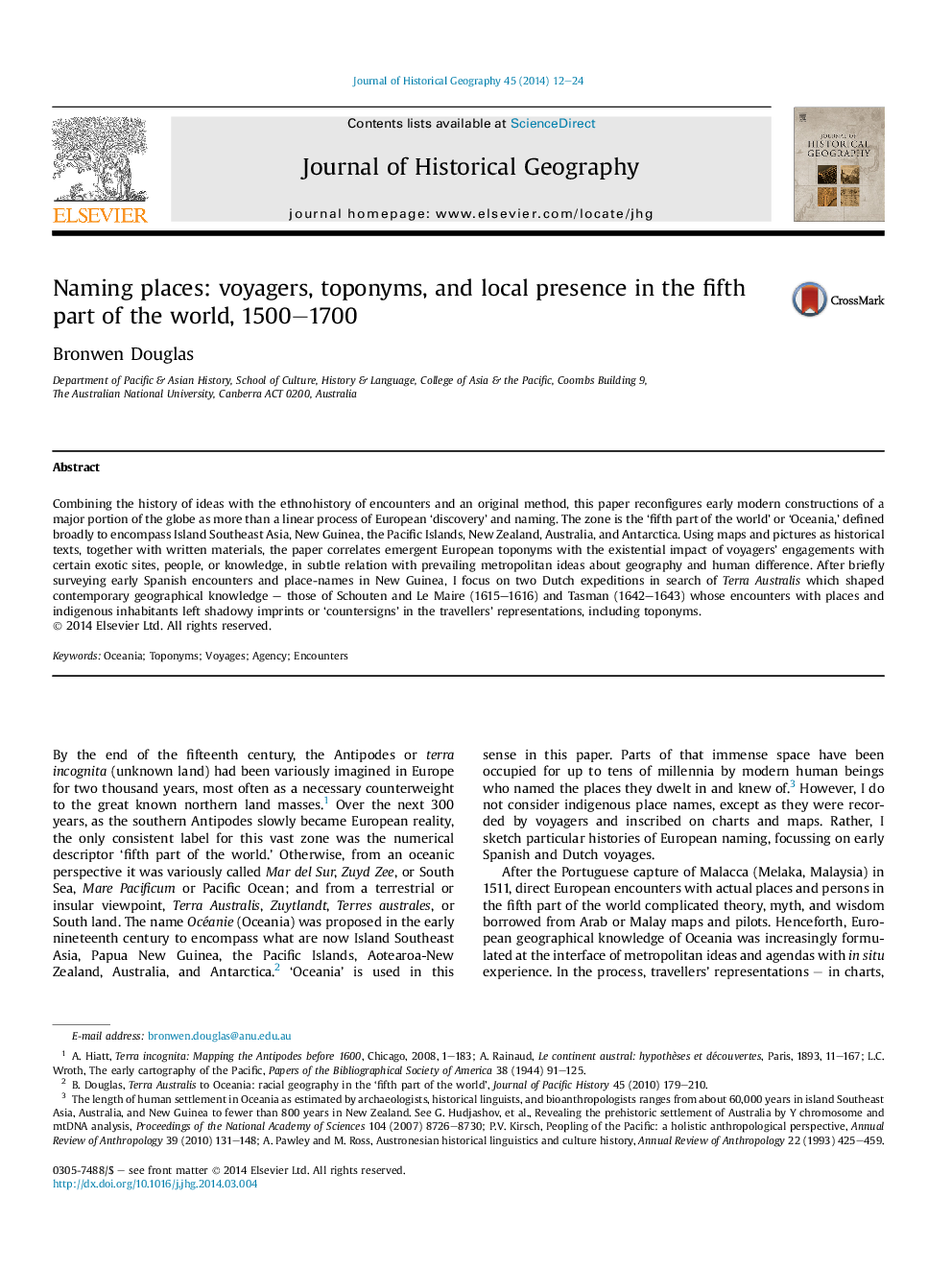| Article ID | Journal | Published Year | Pages | File Type |
|---|---|---|---|---|
| 7447995 | Journal of Historical Geography | 2014 | 13 Pages |
Abstract
Combining the history of ideas with the ethnohistory of encounters and an original method, this paper reconfigures early modern constructions of a major portion of the globe as more than a linear process of European 'discovery' and naming. The zone is the 'fifth part of the world' or 'Oceania,' defined broadly to encompass Island Southeast Asia, New Guinea, the Pacific Islands, New Zealand, Australia, and Antarctica. Using maps and pictures as historical texts, together with written materials, the paper correlates emergent European toponyms with the existential impact of voyagers' engagements with certain exotic sites, people, or knowledge, in subtle relation with prevailing metropolitan ideas about geography and human difference. After briefly surveying early Spanish encounters and place-names in New Guinea, I focus on two Dutch expeditions in search of Terra Australis which shaped contemporary geographical knowledge - those of Schouten and Le Maire (1615-1616) and Tasman (1642-1643) whose encounters with places and indigenous inhabitants left shadowy imprints or 'countersigns' in the travellers' representations, including toponyms.
Keywords
Related Topics
Social Sciences and Humanities
Arts and Humanities
History
Authors
Bronwen Douglas,
